- Alyssum Overview: Beautiful and Fragrant Flower
- Types and Varieties of Alyssum
- Planting and Care for Alyssum
- In Conclusion
- Choosing the Right Location for Alyssum
- Planting Alyssum: Step-by-Step Guide
- 1. Choose the Right Location
- 2. Prepare the Soil
- 3. Plant Alyssum Seeds or Transplants
- 4. Water the Plants
- 5. Mulch and Weed Control
- 6. Fertilize as Needed
- 7. Prune and Deadhead
- 8. Pests and Diseases
- 9. Enjoy the Beauty and Fragrance
- Caring for Alyssum: Tips for Healthy Growth
- Common Types of Alyssum: Aesthetic Variety
- 1. Carpet of Snow Alyssum
- 2. Royal Carpet Alyssum
- 3. Easter Bonnet Alyssum
- 4. Wonderland Alyssum
- 5. Gold Dust Alyssum
- 6. Mountain Gold Alyssum
- 7. Lilac Alyssum
- Popular Varieties of Alyssum: From Snow Princess to Gold Dust
- Snow Princess
- Gold Dust
- Royal Carpet
- Clear Crystal
- Carpet of Snow
- Sweet Alyssum
- Using Alyssum in Garden Design: Functional and Ornamental
- Groundcover
- Border Plant
- Hanging Baskets and Containers
- Pollinator Garden
- Cut Flowers
- Companion Plant
- Rock Gardens
- Common Pests and Diseases: How to Protect Alyssum
- Pests
- Diseases
- Questions and Answers:
- When is the best time to plant Alyssum?
- What are the different types of Alyssum?
- How do I care for Alyssum plants?
- What are some popular varieties of Alyssum?
- Can Alyssum be grown in containers?
- How long does Alyssum bloom?
- Videos: How to Grow Alyssum from Seed | An Easy Planting Guide
Alyssum is a beautiful flowering plant that is native to the Mediterranean region. It is known for its delicate, small flowers that come in a wide range of colors, including white, pink, purple, and yellow. Alyssum is a popular choice for gardeners due to its ability to attract beneficial insects, such as bees and butterflies, making it a valuable addition to any garden.
When it comes to planting and caring for alyssum, it is important to choose the right location. Alyssum thrives in well-draining soil with full sun exposure. It is also important to provide adequate water, especially during hot and dry periods. Mulching around the base of the plants can help retain moisture and prevent weed growth.
There are several different types and varieties of alyssum to choose from. Some popular types include sweet alyssum (Lobularia maritima), which is known for its sweet fragrance and compact growth habit, and rock alyssum (Aurinia saxatilis), which is a perennial variety that is well-suited for rock gardens and slopes.
In addition to its beauty, alyssum is also known for its versatility. It can be grown as a groundcover, in containers, or as part of a mixed border. It is also a great choice for attracting pollinators to your garden. With proper care and attention, alyssum can provide months of color and enjoyment in your garden.
Alyssum Overview: Beautiful and Fragrant Flower
Alyssum is a beautiful and fragrant flower that is popular in gardens for its delicate blooms and pleasant scent. With its clusters of tiny flowers and low, spreading growth habit, alyssum is often used as a border plant or in rock gardens. It is also a favorite of butterfly and bee enthusiasts as it attracts these pollinators.
Types and Varieties of Alyssum
There are several different types and varieties of alyssum to choose from, each with its own unique characteristics:
- Sweet Alyssum: This is the most common type of alyssum, known for its sweet fragrance and profuse blooming. It comes in a variety of colors including white, pink, and purple.
- Carpet Alyssum: As the name suggests, carpet alyssum has a low, spreading growth habit that forms a dense carpet of flowers. It is great for ground cover or hanging baskets.
- Rock Alyssum: This variety of alyssum has a compact growth habit and can tolerate more extreme conditions, making it a good choice for rock gardens or dry areas.
- Mountain Alyssum: Mountain alyssum is a perennial variety that is native to mountainous regions. It has small, clustered flowers and a pleasant fragrance.
Planting and Care for Alyssum
Alyssum is a relatively easy plant to grow and care for. Here are some tips to help you successfully grow alyssum in your garden:
- Choose the right location: Alyssum prefers a sunny location with well-draining soil. It can tolerate some shade, but it will bloom more profusely in full sun.
- Prepare the soil: Before planting alyssum, make sure to prepare the soil by loosening it and adding organic matter such as compost or peat moss.
- Sow the seeds or transplant seedlings: Alyssum can be grown from seeds or transplanted seedlings. Sow the seeds or plant the seedlings in the prepared soil, following the spacing recommendations on the seed packet or plant tag.
- Water regularly: Alyssum prefers evenly moist soil, so make sure to water it regularly, especially during dry periods. Avoid overwatering, as this can cause root rot.
- Deadhead spent blooms: To encourage continuous blooming, deadhead any spent flowers by pinching them off at the base of the stem.
- Fertilize occasionally: Alyssum is not a heavy feeder, but you can fertilize it occasionally with a balanced, all-purpose fertilizer to promote healthy growth and blooming.
In Conclusion
Alyssum is a beautiful and fragrant flower that can add beauty and a pleasant scent to your garden. With its various types and varieties and easy care requirements, it is a popular choice among gardeners. Whether used as a border plant, ground cover, or in rock gardens, alyssum is sure to be a delightful addition to any garden.
Choosing the Right Location for Alyssum
Alyssum is a versatile plant that can thrive in various conditions, but providing the right location can greatly contribute to its growth and overall health. Here are some factors to consider when choosing the right location for your alyssum plants:
- Sunlight: Alyssum prefers full sunlight and can tolerate partial shade. Choose a location that receives at least 6 to 8 hours of direct sunlight per day for optimal growth.
- Soil: Alyssum thrives in well-draining soil. It can tolerate various soil types, but it prefers a slightly alkaline soil with a pH range of 6.0 to 7.5. Prepare the soil by removing any weeds or debris and amending it with organic matter to improve drainage.
- Temperature: Alyssum is a cool-season plant that grows best in moderate temperatures. It can tolerate light frost, but it prefers temperatures ranging between 55 to 75°F (13 to 24°C).
- Wind: Ensure that the location you choose for your alyssum plants is protected from strong winds. High winds can damage the delicate flowers and stunt the growth of the plant. Consider planting near a fence, wall, or other structures that can provide some wind protection.
- Spacing: Depending on the variety, alyssum plants can spread anywhere from 6 to 18 inches (15 to 45 cm) in width. Allow sufficient spacing between plants to ensure good air circulation and prevent overcrowding.
Alyssum is a great addition to gardens, borders, containers, and hanging baskets. By choosing the right location for your alyssum plants, you can ensure their successful establishment and enjoy their beautiful blooms throughout the growing season.
Planting Alyssum: Step-by-Step Guide
1. Choose the Right Location
Find a location that receives full sun to partial shade. Alyssum thrives in well-draining soil, so make sure the area has good drainage.
2. Prepare the Soil
Loosen the soil in the planting area by using a garden fork or tiller. Remove any weeds or grass from the planting area.
Add organic matter, such as compost or well-rotted manure, to improve soil fertility and drainage.
3. Plant Alyssum Seeds or Transplants
If starting from seeds, sow the Alyssum seeds directly into the prepared soil. Lightly cover the seeds with a thin layer of soil.
If using transplants, dig a hole in the prepared soil and place the Alyssum plant in it. Backfill the hole and gently firm the soil around the plant.
4. Water the Plants
Water the newly planted Alyssum thoroughly to settle the soil and help the plants establish their roots. Keep the soil evenly moist but not waterlogged.
5. Mulch and Weed Control
Apply a layer of mulch around the Alyssum plants to help conserve moisture, suppress weeds, and regulate soil temperature.
Regularly check for weeds and remove them promptly to prevent competition for nutrients and water.
6. Fertilize as Needed
Alyssum plants generally do not require much fertilizer. However, if the plants show signs of nutrient deficiency, apply a balanced slow-release fertilizer according to the package instructions.
7. Prune and Deadhead
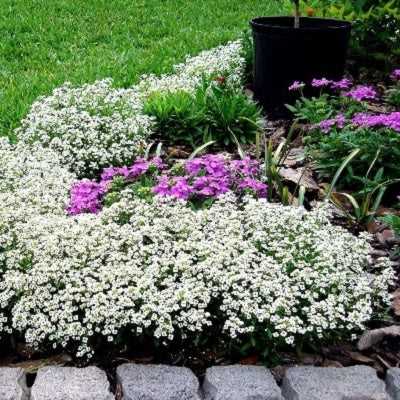
To promote more blooms and prevent self-seeding, deadhead the faded flowers regularly. Trim back any leggy or overgrown stems to maintain a compact and tidy appearance.
8. Pests and Diseases
Alyssum plants are generally not prone to serious pest or disease problems. However, keep an eye out for aphids, slugs, and snails, and take appropriate measures to control them if necessary.
9. Enjoy the Beauty and Fragrance
Alyssum plants are known for their delicate beauty and sweet fragrance. Sit back, relax, and enjoy the colorful display and pleasant aroma they bring to your garden!
Caring for Alyssum: Tips for Healthy Growth
- Planting Location: Choose a sunny location with well-draining soil for planting Alyssum. This plant prefers full sunlight but can also tolerate partial shade.
- Soil Preparation: Before planting Alyssum, make sure to prepare the soil by loosening it with a garden fork or tiller. Remove any weeds or debris and amend the soil with organic matter, such as compost or well-rotted manure.
- Watering: Alyssum requires regular watering, especially during dry spells or hot weather. Keep the soil evenly moist but not waterlogged. Avoid overhead watering, as it can lead to fungal diseases.
- Fertilizing: Alyssum is not a heavy feeder, but it can benefit from a light application of balanced fertilizer once a month during the growing season. Alternatively, use a slow-release fertilizer at the time of planting.
- Deadheading: To encourage continuous blooming, deadhead the faded flowers regularly. Pinch off the spent blooms just above a set of healthy leaves to promote new growth and more flowers.
- Pruning: Alyssum has a trailing growth habit, and its stems can become leggy over time. To maintain a compact, bushy appearance, prune the plant after each flush of bloom. Cut back the stems by about one-third to promote branching.
- Pest and Disease Control: Alyssum is generally resistant to pests and diseases. However, aphids, slugs, and snails may occasionally attack the plant. Use organic pest control methods, such as handpicking or spraying with insecticidal soap, if necessary.
- Winter Care: In regions with cold winters, Alyssum may not survive the freezing temperatures. Consider growing it as an annual or provide protection with a layer of mulch or row cover. In milder climates, Alyssum may overwinter and bloom again in the following year.
By following these care tips, you can ensure healthy growth and abundant blooms for your Alyssum plants.
Common Types of Alyssum: Aesthetic Variety
Alyssum, also known as sweet alyssum, is a popular flowering plant that is known for its delicate, fragrant blooms. This versatile plant comes in various types and varieties, each with its own unique characteristics and aesthetic appeal.
1. Carpet of Snow Alyssum
- Scientific name: Lobularia maritima
- Height: 3-6 inches
- Flower color: White
- Fragrance: Sweet
Carpet of Snow Alyssum is one of the most widely grown types of alyssum. It is characterized by its dense growth habit and profusion of small, white flowers that create a beautiful carpet-like effect.
2. Royal Carpet Alyssum
- Scientific name: Lobularia maritima
- Height: 4-6 inches
- Flower color: Purple
- Fragrance: Sweet
Royal Carpet Alyssum is a stunning variety with vibrant purple flowers. It forms a low-growing mat of foliage and flowers, making it an excellent choice for edging borders or filling gaps in rock gardens.
3. Easter Bonnet Alyssum
- Scientific name: Lobularia maritima
- Height: 4-6 inches
- Flower colors: Mix of white, pink, and lavender
- Fragrance: Sweet
Easter Bonnet Alyssum is a delightful mix of pastel-colored flowers. This variety is often used in containers, hanging baskets, or as a ground cover. Its sweet fragrance adds to its appeal.
4. Wonderland Alyssum
- Scientific name: Lobularia maritima
- Height: 4-6 inches
- Flower colors: Mix of white and violet shades
- Fragrance: Sweet
Wonderland Alyssum is another popular variety that produces clusters of small, fragrant flowers in shades of white and violet. It is often used as a border plant or in mass plantings for a stunning display of color.
5. Gold Dust Alyssum
- Scientific name: Aurinia saxatilis
- Height: 6-12 inches
- Flower color: Yellow
- Fragrance: Mild
Gold Dust Alyssum is a unique variety with bright yellow flowers that appear in clusters. It is slightly taller than other types of alyssum and is ideal for adding a pop of color to borders, rock gardens, or containers.
6. Mountain Gold Alyssum
- Scientific name: Aurinia saxatilis
- Height: 8-12 inches
- Flower color: Yellow
- Fragrance: Mild
Mountain Gold Alyssum is a larger variety of alyssum with bright yellow flowers. It is often used in rock gardens or as a ground cover, as it can tolerate dry conditions and is low maintenance.
7. Lilac Alyssum
- Scientific name: Alyssum montanum
- Height: 8-12 inches
- Flower color: Lilac
- Fragrance: Mild
Lilac Alyssum is a perennial variety that features clusters of lilac-colored flowers. It is a great choice for borders, rock gardens, or wildflower meadows, as it attracts butterflies and other pollinators.
These are just a few of the common types of alyssum available. Each variety has its own distinct beauty and can be used to enhance different areas of your garden or landscape. Whether you prefer the classic white blooms or the vibrant colors of purple and yellow, there is an alyssum variety that will suit your aesthetic preferences.
Remember to choose a variety that is well-suited to your climate and growing conditions to ensure the best results.
Popular Varieties of Alyssum: From Snow Princess to Gold Dust
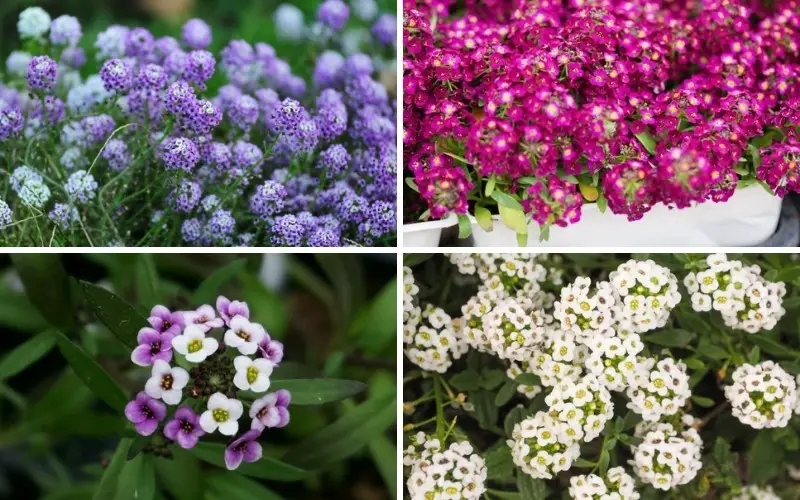
Alyssum is a versatile and popular flowering plant that comes in a variety of different cultivars. Here are some of the most popular varieties of Alyssum:
Snow Princess
- Snow Princess is a stunning variety of Alyssum that features delicate white flowers.
- It is known for its long bloom time, starting in spring and lasting until fall.
- This variety is perfect for borders, containers, and hanging baskets.
Gold Dust
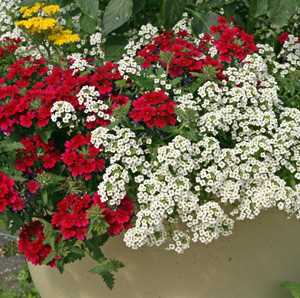
- Gold Dust is a unique variety of Alyssum with vibrant yellow flowers.
- It adds a pop of color to any garden or landscape.
- This variety is known for its heat and drought tolerance, making it a great choice for hot climates.
Royal Carpet
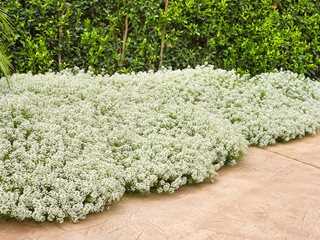
- Royal Carpet is a popular variety of Alyssum that forms a dense carpet of purple flowers.
- It is a low-growing variety, making it perfect as a ground cover or for edging flower beds.
- This variety is also known for its sweet fragrance.
Clear Crystal
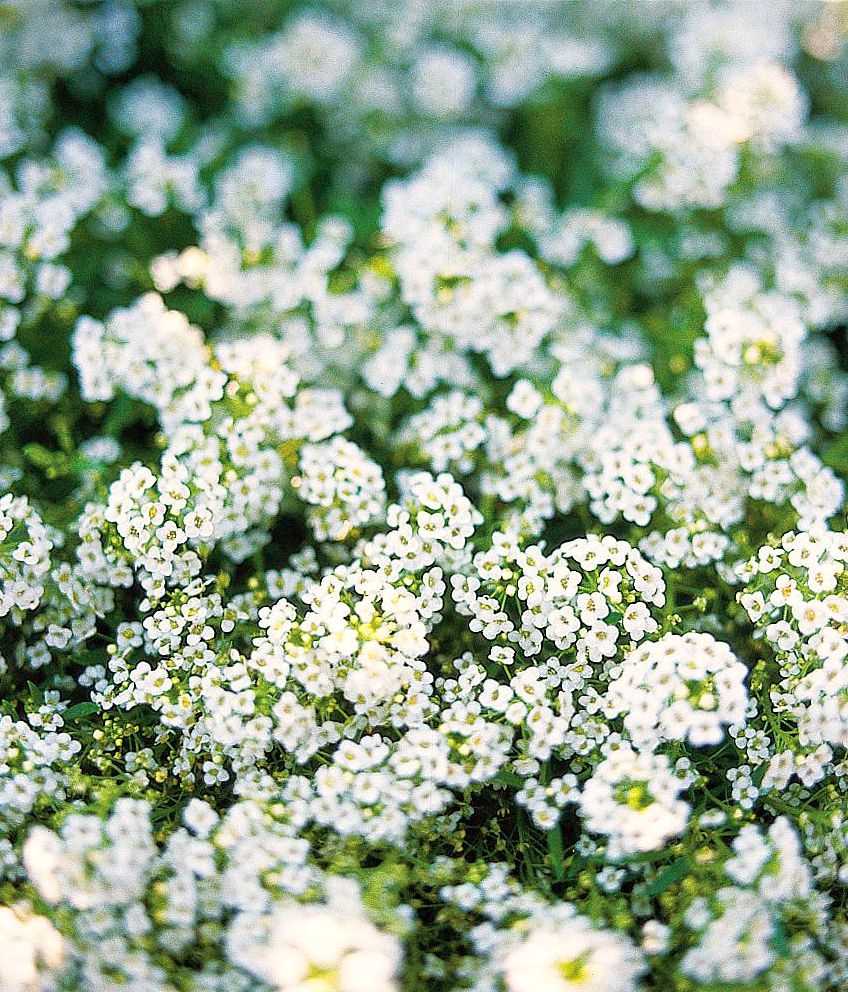
- Clear Crystal is a compact and early-blooming variety of Alyssum with pure white flowers.
- It is well-suited for containers, borders, and rock gardens.
- This variety is also great for attracting bees and butterflies to your garden.
Carpet of Snow
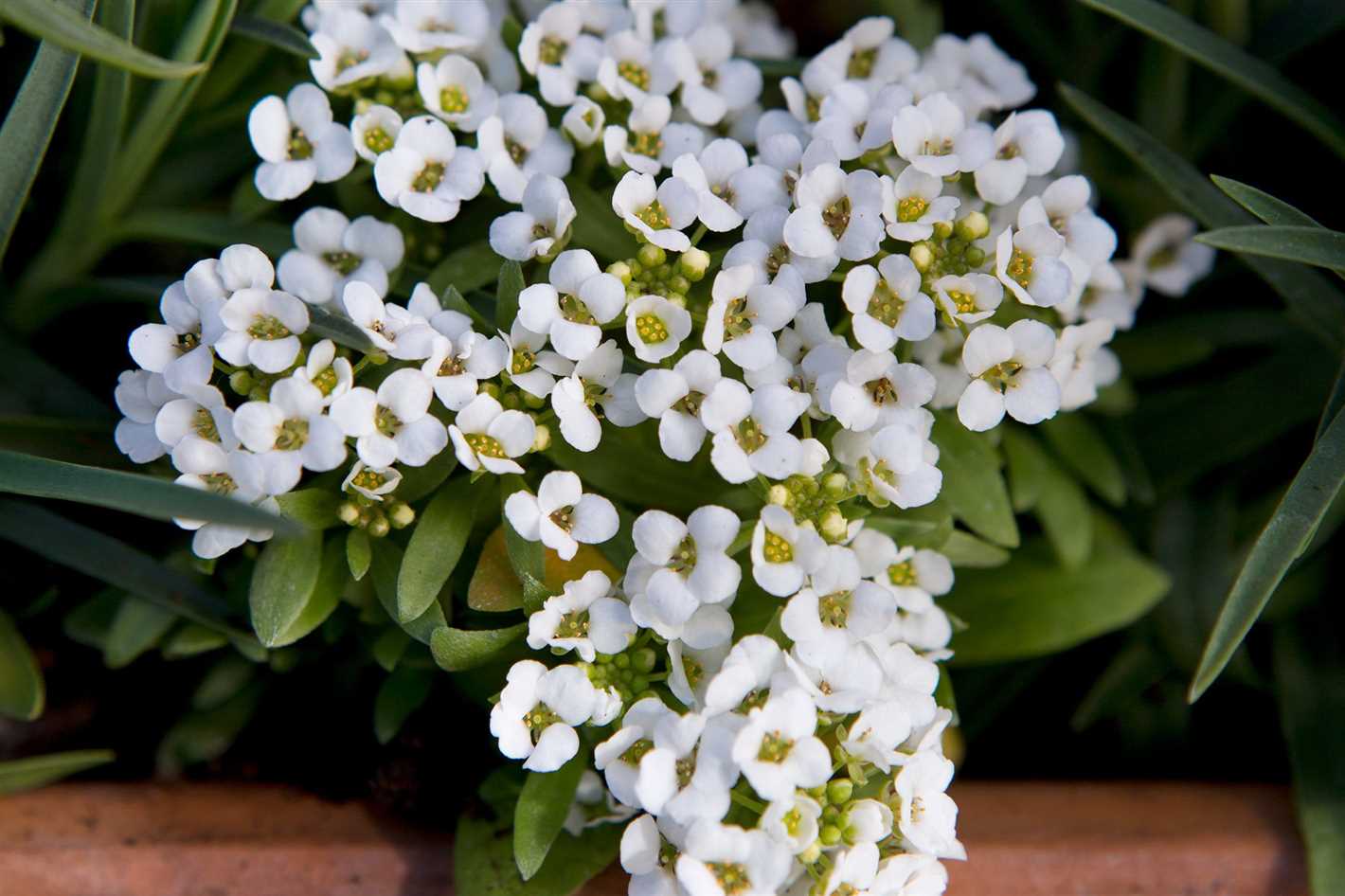
- Carpet of Snow is a classic variety of Alyssum with snow-white flowers.
- It has a low-growing and spreading habit, making it perfect for ground cover.
- This variety is also known for its sweet fragrance.
Sweet Alyssum
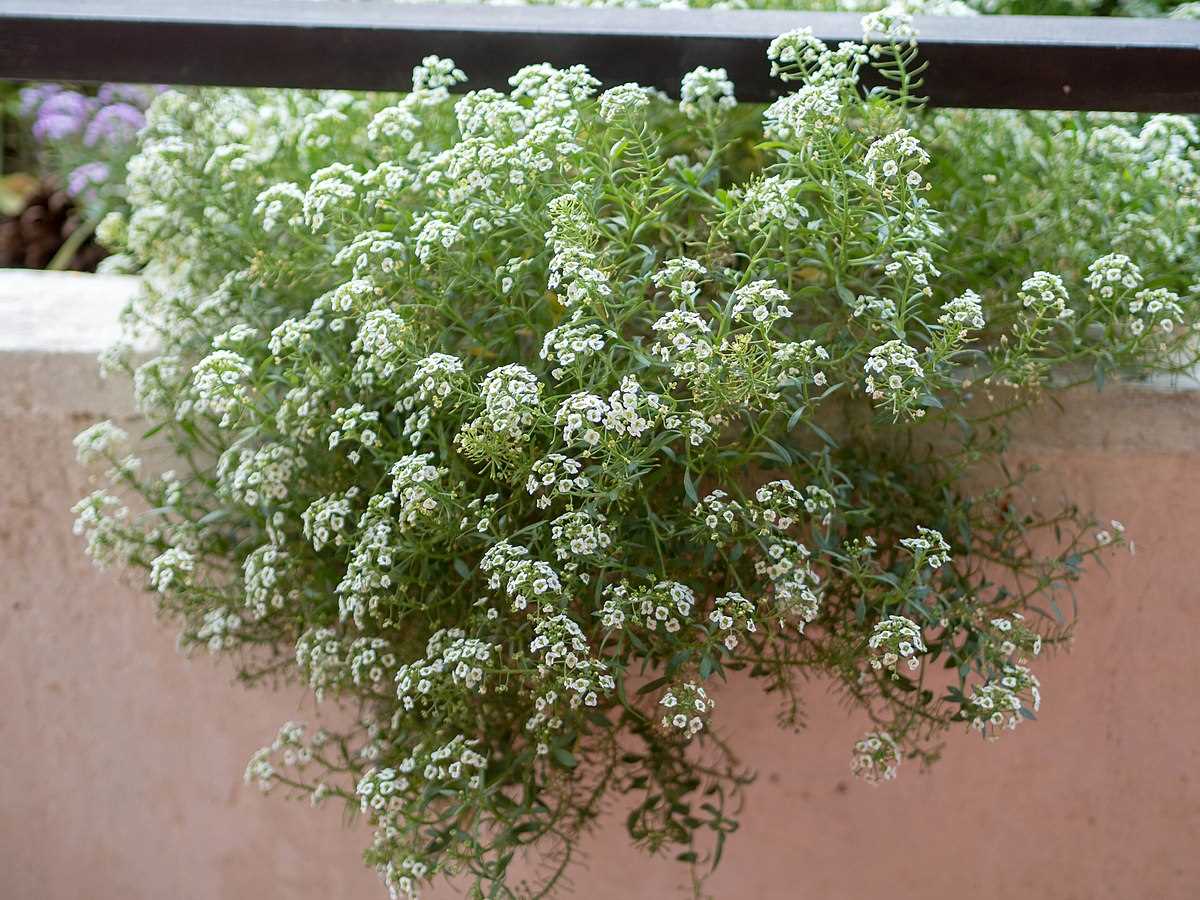
- Sweet Alyssum is the most common and widely grown variety of Alyssum.
- It features tiny, fragrant flowers in shades of white, pink, and purple.
- This variety is known for its low maintenance and ability to attract beneficial insects.
| Variety | Flower Color | Height | Bloom Time | Uses |
|---|---|---|---|---|
| Snow Princess | White | 8-10 inches | Spring to Fall | Borders, containers, hanging baskets |
| Gold Dust | Yellow | 6-8 inches | Spring to Fall | Gardens, landscapes |
| Royal Carpet | Purple | 4-6 inches | Spring to Fall | Ground cover, edging |
| Clear Crystal | White | 6-8 inches | Spring to Summer | Containers, borders, rock gardens |
| Carpet of Snow | White | 4-6 inches | Spring to Fall | Ground cover |
| Sweet Alyssum | White, pink, purple | 4-6 inches | Spring to Fall | Containers, borders, rock gardens |
With so many beautiful and diverse varieties to choose from, Alyssum is a fantastic addition to any garden or landscape.
Using Alyssum in Garden Design: Functional and Ornamental
Alyssum is a versatile plant that can be used in various ways in garden design. It is not only beautiful but also serves functional purposes. Here are some ideas on how to incorporate alyssum into your garden:
Groundcover
Alyssum is an excellent groundcover option due to its low-growing habit and ability to spread quickly. It can be used to fill in gaps between larger plants or to create a carpet-like effect in flower beds. The dense foliage and delicate flowers of alyssum create an attractive and cohesive look.
Border Plant
Alyssum is also suitable for border plantings. Its small size and mounding habit make it perfect for defining the edges of pathways or garden beds. You can create a neat and tidy border by planting alyssum along the edges and complementing it with taller plants in the center.
Hanging Baskets and Containers
Alyssum is an excellent choice for hanging baskets and containers. Its trailing habit and profusion of flowers add a splash of color and charm to any container. Combine alyssum with other trailing plants or mix different varieties of alyssum to create a stunning display.
Pollinator Garden
Alyssum is a magnet for bees, butterflies, and other pollinators. By planting alyssum in your garden, you can create a pollinator-friendly space and support local insect populations. The fragrant flowers of alyssum are irresistible to pollinators and will attract them to your garden.
Cut Flowers
Alyssum is an excellent choice for cut flower arrangements. Its dainty flowers can be picked and used in bouquets or floral displays. The long-lasting blooms and sweet fragrance of alyssum will add beauty and charm to any floral arrangement.
Companion Plant
Alyssum is known for its ability to attract beneficial insects such as hoverflies and parasitic wasps, which help control garden pests. By planting alyssum near vegetable plants or other susceptible plants, you can attract these beneficial insects and naturally control pests without the need for pesticides.
Rock Gardens
Alyssum is well-suited for rock gardens due to its low-growing habit and ability to tolerate dry conditions. Plant alyssum in crevices between rocks or use it to create a cascading effect over rocks. Its delicate flowers will add a touch of color and softness to the rugged landscape of a rock garden.
| Variety | Description |
|---|---|
| Snow Princess | Alyssum with large, pure white flowers; blooms from spring to fall |
| Carpet of Snow | Compact alyssum with small white flowers; heat and drought tolerant |
| Gold Dust | Alyssum with golden-yellow flowers; attracts butterflies |
| Wonderland Mix | Mixture of alyssum varieties with various flower colors; excellent for borders and hanging baskets |
| Clear Crystal Mix | Mixture of alyssum varieties with clear, vibrant flower colors; ideal for rock gardens |
With its versatility and beauty, alyssum can be a valuable addition to any garden design. Whether used as a groundcover, border plant, or in containers, alyssum will bring charm and functionality to your outdoor space.
Common Pests and Diseases: How to Protect Alyssum
Pests
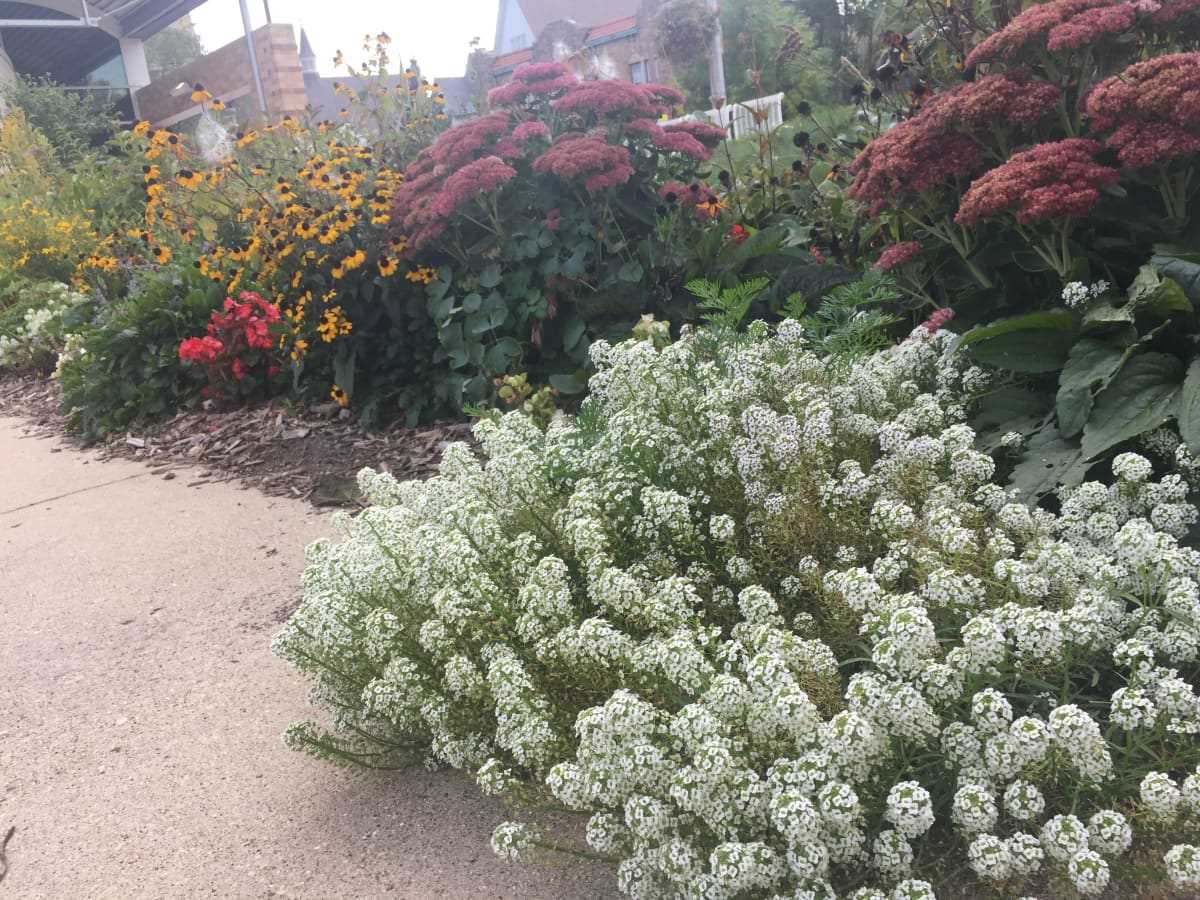
- Aphids: These small insects feed on the sap of the alyssum plant, causing stunted growth and distorted leaves. To control aphids, you can use insecticidal soap or neem oil. Alternatively, you can introduce natural predators like ladybugs or lacewings to the garden.
- Cabbage worms: These green caterpillars can be a problem for alyssum plants, as they feed on the leaves. Handpicking the caterpillars is an effective way to control them. You can also use organic insecticides like Bacillus thuringiensis to kill the worms.
- Snails and slugs: These slimy pests can eat away at the alyssum foliage. To deter them, you can set up barriers like copper tape or use organic pellets to repel them. Creating a beer trap by burying a shallow container of beer in the soil can also attract and drown them.
Diseases
- Damping-off: This fungal disease can affect young alyssum seedlings, causing them to rot and die. To prevent damping-off, it’s important to use clean, sterile potting soil and avoid overwatering. Providing good air circulation and avoiding overcrowding can also help prevent the disease.
- Powdery mildew: This fungal disease manifests as a white powdery coating on the leaves of the alyssum plant. It can be controlled by ensuring proper air circulation, avoiding overhead watering, and removing affected leaves. Applying fungicidal sprays can also help control powdery mildew.
- Root rot: Excessive moisture or poor drainage can lead to root rot in alyssum plants. To prevent this disease, ensure that the soil is well-draining and avoid overwatering. Adding organic matter to the soil can also improve drainage.
Questions and Answers:
When is the best time to plant Alyssum?
The best time to plant Alyssum is in the early spring when the soil is starting to warm up.
What are the different types of Alyssum?
There are several types of Alyssum, including sweet Alyssum, mountain Alyssum, and gold Alyssum.
How do I care for Alyssum plants?
To care for Alyssum plants, make sure they are watered regularly, remove any dead flowers or leaves, and provide them with full sun or partial shade.
What are some popular varieties of Alyssum?
Popular varieties of Alyssum include Carpet of Snow, Purple Stream, and Snow Princess.
Can Alyssum be grown in containers?
Yes, Alyssum can be grown in containers as long as they have good drainage and are provided with proper care.
How long does Alyssum bloom?
Alyssum blooms for a long period of time, typically from spring until fall.







